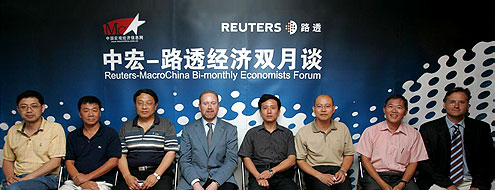Reuters-Macrochina No.3
Subject: About the profitability of Chinese companies.

Questions:
- NBS figure showed profits in the first half up 28 percent. Are the figures trustworthy?
- If so, how are companies able to maintain their profit margins given rising input costs for things such as oil, commodities and labour? Is it because they are passing costs along to customers again, as the PMIs suggest? If so, does that indicate growing pipeline inflationary pressures, as suggested by the acceleration of the PPI? If profits are rising, does that mean that reports of excess capacity are exaggerated?
- What does the profit outlook say about China's influence on global inflation? U.S. prices of imports from China are still falling? Why? Is it because Chinese companies are exporting excess production at a loss, or is it because they have made such productivity gains that they can afford to reduce their unit costs? If Chinese producers are in fact raising their domestic selling prices, will export prices soon start to rise as well, thus ending the disinflationary benefits China has brought to the world economy?
- And what does the outlook for the RMB mean for the profit outlook? Bo Xilai complains that lots of textile exporters are struggling to cope with the modest RMB appreciation so far because they operate with margins of just 3 percent. But exports overall are still booming and officials say the high proportion of processing trade means foreign-invested companies are not particularly vulnerable to a rising RMB because the cost of their imported components becomes cheaper.



